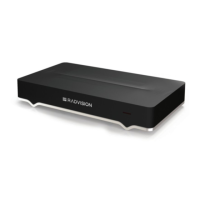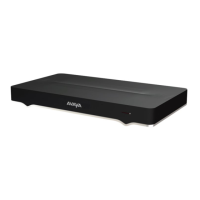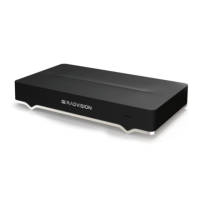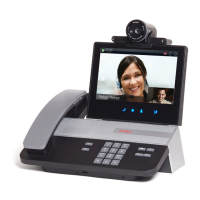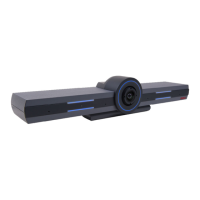Field Description
Date & Time Select Yes to enable date and time stamping over the recorded video. The time is
updated each second. The format of the date and time is in accordance with the XT
Series settings for country and 12/24 hour format.
If you are using Internet time, a clock icon is displayed in the date and time stamp.
Label Type an optional label to appear on the recording.
Digital Signature Select Yes to activate a digital signature of the recorded video. When the video is
recorded, the XT Series generates a hash of the video file using a certificate uploaded
by the customer. The XT Series creates a p7m file together with the video file. The
p7m file contains the signed hash and you can use it to verify that the video has not
been altered.
If you have not uploaded a valid customer certificate to sign recording files, the XT
Series uses a self-signed certificate to digitally sign recorded files, if a self-signed
certificate has been configured. Self-signed certificates do not assure the same level
of security as certificates signed by an official Certificate Authority (CA). Ensure that
you save your digitally signed certificate in a safe place. When XT Series is restored
to factory settings, your digitally signed certificate is lost. You must upload your
digitally signed certificate to the XT Series if you want to verify the integrity of the
recorded files using the XT Series.
Save to External
Server
Select Yes to enable saving of your files to an external FTP server.
External Server Type • Select AESR if you have deployed Avaya Equinox Management with Avaya Equinox
Streaming and Recording Server configured to accept file transfers.
• Select Generic if you want to transfer your file to a standard FTP server. In case of
a generic server, assure that Passive Transfer Mode is enabled on the server.
FTP Server URL Type a URL containing the name or the IP address of the FTP server and optionally
the port number (if different from the standard one, 21) and an existing subdirectory
path on the server where your files will be saved. For example:
[ftp://]servername_or_serveraddress[:port][/remotedir/.../]
FTP Server User Type the username to login into the FTP server.
FTP Server Password Type the password to login into the FTP server.
FTP Secure
Connection
Select Yes to ensure that the file transfer is secured using FTPS.
AESR File Owner Type the name of the file owner in Avaya Equinox Streaming and Recording Server. It
usually corresponds to a user defined in Avaya Equinox Management.
AESR Server Tenant
ID
Type the tenant or organization identification number for the file owner’s organization,
as defined in Avaya Equinox Management/Avaya Equinox Streaming and Recording
Server. If your deployment is not configured in multi-tenant mode, use 999.
Use the following table as a guide to determine the best bit rate to use, depending on the1
resolution you require and your disk space constraints.2
Configuring Advanced User Settings
December 2017 Avaya Scopia
®
XT Series User Guide 106
Avaya - Proprietary. Use pursuant to the terms of your signed agreement or Avaya policy.
DRAFT—December 15, 2017—1:33 PM (UTC)

